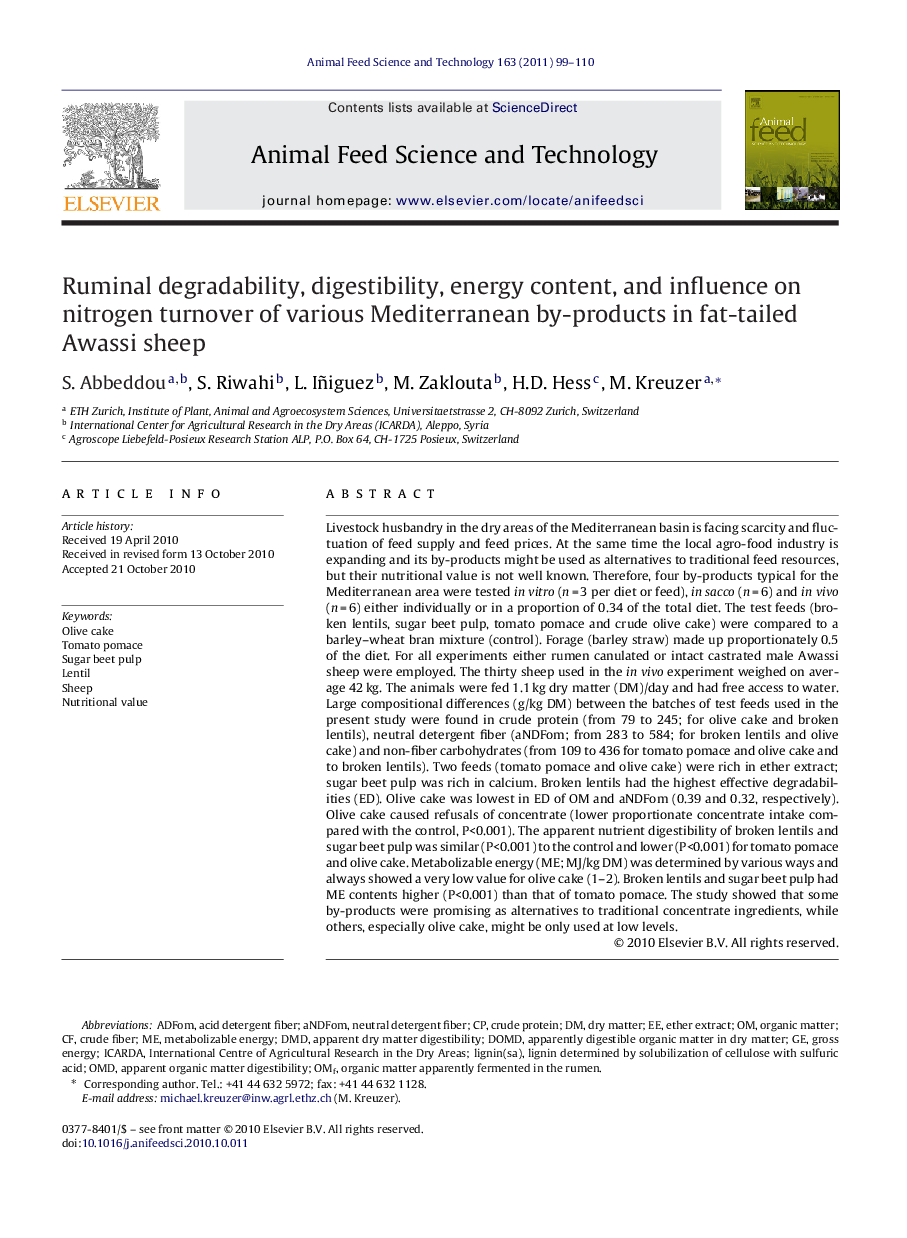| Article ID | Journal | Published Year | Pages | File Type |
|---|---|---|---|---|
| 8492799 | Animal Feed Science and Technology | 2011 | 12 Pages |
Abstract
Livestock husbandry in the dry areas of the Mediterranean basin is facing scarcity and fluctuation of feed supply and feed prices. At the same time the local agro-food industry is expanding and its by-products might be used as alternatives to traditional feed resources, but their nutritional value is not well known. Therefore, four by-products typical for the Mediterranean area were tested in vitro (n = 3 per diet or feed), in sacco (n = 6) and in vivo (n = 6) either individually or in a proportion of 0.34 of the total diet. The test feeds (broken lentils, sugar beet pulp, tomato pomace and crude olive cake) were compared to a barley-wheat bran mixture (control). Forage (barley straw) made up proportionately 0.5 of the diet. For all experiments either rumen canulated or intact castrated male Awassi sheep were employed. The thirty sheep used in the in vivo experiment weighed on average 42 kg. The animals were fed 1.1 kg dry matter (DM)/day and had free access to water. Large compositional differences (g/kg DM) between the batches of test feeds used in the present study were found in crude protein (from 79 to 245; for olive cake and broken lentils), neutral detergent fiber (aNDFom; from 283 to 584; for broken lentils and olive cake) and non-fiber carbohydrates (from 109 to 436 for tomato pomace and olive cake and to broken lentils). Two feeds (tomato pomace and olive cake) were rich in ether extract; sugar beet pulp was rich in calcium. Broken lentils had the highest effective degradabilities (ED). Olive cake was lowest in ED of OM and aNDFom (0.39 and 0.32, respectively). Olive cake caused refusals of concentrate (lower proportionate concentrate intake compared with the control, P<0.001). The apparent nutrient digestibility of broken lentils and sugar beet pulp was similar (P<0.001) to the control and lower (P<0.001) for tomato pomace and olive cake. Metabolizable energy (ME; MJ/kg DM) was determined by various ways and always showed a very low value for olive cake (1-2). Broken lentils and sugar beet pulp had ME contents higher (P<0.001) than that of tomato pomace. The study showed that some by-products were promising as alternatives to traditional concentrate ingredients, while others, especially olive cake, might be only used at low levels.
Keywords
lignin determined by solubilization of cellulose with sulfuric acidDOMDOMDDMDaNDFomADFomOMFNutritional valueacid detergent fiberMetabolizable energygross energyICARDASugar beet pulpLentilether extractcrude fiberneutral detergent fiberLignin(sa)organic matterdry mattercrude proteinOlive cakeTomato pomaceSheep
Related Topics
Life Sciences
Agricultural and Biological Sciences
Animal Science and Zoology
Authors
S. Abbeddou, S. Riwahi, L. Iñiguez, M. Zaklouta, H.D. Hess, M. Kreuzer,
